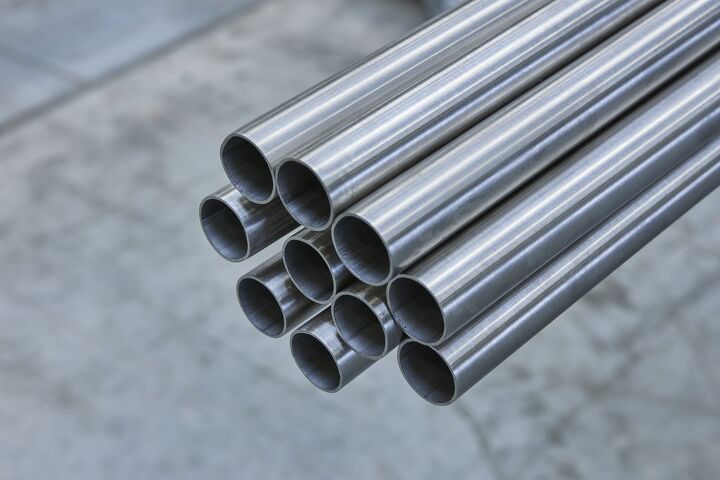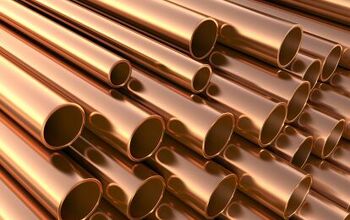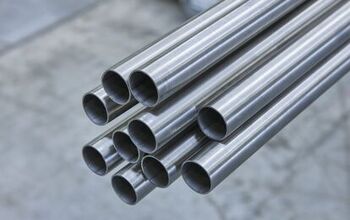Can Galvanized Pipe Be Used For Natural Gas?

Plumbing for natural gas service can be a tricky proposition. There is a huge difference between myths, rumors, and facts. Getting to the bottom of the galvanized pipe question is not as easy as it seems. So, the question remains. Can galvanized pipe be used for natural gas?
The International Fuel Gas Code (IFGC) allows galvanized pipes for natural gas delivery systems. The galvanized pipe must meet the standards outlined in ASTM A53/A53M-05. However, the IFGC is a model code. Jurisdictions having authority may change the code requirements. It is always advisable to check with your local building codes department for the exact standards in your area.
There is a lot of confusion about using galvanized pipes for natural gas delivery systems. Some of this confusion stems from misconceptions about galvanized pipe. The past history of the gas industry also bears on these myths and misunderstandings. There is still some discussion among professionals about using galvanized pipes in natural gas delivery systems.
Do You Need a Faucet, Fixture, or Pipe Repair or Replacement?
Get free, zero-commitment quotes from pro contractors near you.

Does Natural Gas Corrode Galvanized Pipes?
Many years ago, the gas industry was less regulated than today. It was not uncommon for gas utilities to deliver coal gas to homes instead of natural gas. Coal gas is a manufactured gas containing many compounds that can react unfavorably with the zinc used to a galvanized pipe. The zinc coating is prone to flaking away from the steel pipe and clogging orifices and valves.
This led many cities and counties to ban galvanized pipes for delivering gas into homes or businesses. Black iron pipe became the choice of most plumbers and pipefitters for installing gas delivery systems. That practice continues to the present.
Today, the natural gas industry filters and scrubs the natural delivered to most systems. The harmful compounds that can cause corrosion or flaking have, for the most part, been removed from the natural gas. This makes galvanized pipe again permissible for use with natural gas.
How Do I Know if Galvanized Pipe is Permitted?
The International Fuel Gas Code, on which many local building codes are based, no longer prohibits galvanized pipe for natural gas delivery. Most jurisdictions having authority have adopted these updated codes. Unfortunately, a few locations lag behind. The only reliable way to know if galvanized pipe is legal in your area is to check with the local building codes office.
The licensed plumbers in your area will also know what kinds of pipes are permissible for plumbing natural gas systems. More than likely, if you are adding or replacing natural gas pipes, you will need a permit. Most jurisdictions having authority require the plumbing of natural gas lines to be done by a licensed plumber and inspected and tested before use.
Is Black Iron Pipe Better than Galvanized for Natural Gas Lines?
The zinc coating is the only difference between black iron and galvanized pipes. The zinc coating applied to the black iron pipe during the galvanizing process protects the iron pipes from corrosion. This is an extra step in the manufacturing process, which adds additional cost to galvanized pipes.
In many parts of the country, black iron pipes are the choice for natural gas delivery systems. The cost difference is often the main reason for this choice. However, if you shop at your local home improvement store, don’t be surprised to find black iron pipe priced higher than galvanized pipe.
In most jurisdictions and under most building codes, both black iron pipes and galvanized pipes are permitted for delivering natural gas. The International Residential Code (IRC and the Uniform Plumbing Code (UPC) accept galvanized pipes for natural gas plumbing. You should still check with your local building codes department to ensure that galvanized pipe is acceptable in your area.
Can I Mix Galvanized Pipes and Fittings With Black Iron Pipes?
There is no real consensus among the plumbing codes or among professionals about the issue of mixing types of pipes and fittings. Some plumbers will never use a galvanized fitting with black iron pipe and vice versa. Other professionals claim the chance of a leak where the two dissimilar materials meet is negligible and poses no risk.
The Uniform Plumbing Code does not prohibit mixing galvanized and black iron pipes in a natural gas system. Unless your local building and plumbing code do not allow mixing galvanized and black iron pipes in the same system, the system should be safe.
My Plumber talks about Supply, Branch, Drop Lines, Risers and Drip Legs. What are These?
These terms all refer to parts of the natural gas distribution system in your home. It doesn’t matter if the supply lines are black iron pipes or galvanized pipes. A properly installed natural gas delivery system will have some or all of these parts. These brief discussions of these terms should help understand your natural gas distribution system.
Branch Lines
Branch lines run from the supply line leading into your home from the gas meter. Branch lines carry natural gas to individual appliances such as gas cookstoves, water heaters, and boilers. Branch lines are usually made of black iron pipes or galvanized pipes. The local building code usually specifies what types of pipes are permitted and the required pipe size.
Drop Lines
If the branch line serving your appliance is above the appliance, a drop line connects the appliance with the branch line. Drop lines may be made of the same material as the branch lines. The drop lines may be corrugated flexible stainless steel pipes in some jurisdictions.
Riser Lines
Riser lines are drop lines in reverse. If the branch line is below the appliance, a vertical pipe connects the appliance with the branch line. This vertical pipe is called the riser line. Like a drop line, the riser line is permitted to be made of corrugated flexible stainless steel in some jurisdictions.
Drip Leg
Most natural gas distribution systems will include a drip leg at the appliance connection point. A drop leg may also be called a trap or dirt pocket. This assembly usually is constructed from a T fitting in the gas pipe, a nipple and a cap. The nipple is pointed down so that any dirt, debris or moisture in the gas or gas line is collected at the bottom.
A drip leg depends on gravity to do the work of collecting this debris and moisture. The purpose is to keep debris, dust, and moisture from entering your appliance’s valves and burner assembly.
A Shut Off Valve
Each drop line or riser line should be fitted with an approved gas shut-off valve where it connects with the appliance. This allows you to isolate each appliance in the case of a problem without the need to shut off all of the natural gas services to your home.
My Glavanized Gas Pipes Developed a Leak, and the Gas Company Says it is My Problem
The gas company is right. The gas utility that supplies natural gas to your home is responsible for the piping up to and including the gas meter. All pipes in the natural gas delivery system from the gas meter to your home and appliances are your responsibility. You must perform the maintenance and repair on these pipes if there is a problem.
In most jurisdictions, the building and plumbing codes require a permit to perform any repairs or installation of natural gas piping. In many instances, a licensed plumber is also required to do the work. An inspection of the repair or installation is usually required. The inspection will almost always include a shut-in pressure test before the inspector releases the job.
Is it Legal to Use Plastic Pipe to Bring Natural Gas to my Home?
In most jurisdictions, the use of polyethylene pipe specifically rated for natural gas is approved by the plumbing and building codes with certain stip[ulations. These stipulations and approvals vary from city to city. You must ensure that the plastic pipe is approved by your local building code before installing. Most codes make these stipulations about plastic pipes in a natural gas delivery system.
You Must Use The Proper Plastic Pipe for Natural Gas
According to Fire Engineering, two types of plastic pipe are approved as natural gas supply lines. Chlorinated polyvinyl chloride (CPVC) and cross-linked polyethylene (PEX) can supply natural gas. Other types of plastic pipes should never be used as part of a natural gas supply system in your home.
Most building codes restrict plastic tubing for the delivery of natural gas to the main supply line that connects the gam meter to the home. The plastic delivery line must be buried according to local code and must be a single uninterrupted run of pipe with no joints.
Where the plastic pipe emerges from the ground, it must be protected with a pipe sheath to protect the plastic pipe from direct exposure to sunlight or accidental damage. In most jurisdictions, PVC pipe meets this requirement.
Do You Need a Faucet, Fixture, or Pipe Repair or Replacement?
Get free, zero-commitment quotes from pro contractors near you.

Galvanized Pipe and Natural Gas – Compatible but Not Ideal
You can use galvanized pipe for your natural gas delivery system in most jurisdictions. The recognized building and plumbing codes no longer prohibit galvanized piping in gas delivery systems. However, many plumbing professionals still recommend against using galvanized pipes. You must check with your local building codes department to ensure your gas line installations meet the local codes.

Dennis is a retired firefighter with an extensive background in construction, home improvement, and remodeling. He worked in the trades part-time while serving as an active firefighter. On his retirement, he started a remodeling and home repair business, which he ran for several years.
More by Dennis Howard















![Standard Dining Room Table Dimensions [for 4, 6, 8, 10 and 12 People]](https://cdn-fastly.upgradedhome.com/media/2023/07/31/9074335/standard-dining-room-table-dimensions-for-4-6-8-10-and-12-people.jpg?size=350x220)











